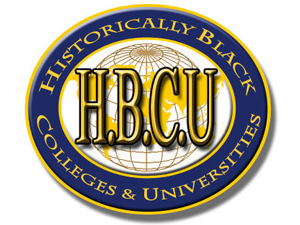-Staff Writer-

(FinalCall.com) – “In the field of higher education, while the State has fostered white colleges for one hundred and fifty years it made its first grant to a Negro college in 1914 or twenty-two years ago. … The contrast between the amounts of money received by the two racial groups would show, if possible of computation, an enormous differential in favor of the white race.”
That was from a 1937 report by the Commission on Higher Education for Negroes to the Governor and Legislature of Maryland. The problem then was inequity in state funding to historically Black institutions and that problem continues today.
The Lawyers Committee for Civil Rights Under Law and its partners represent the plaintiffs, prospective students, current students and alumni of Maryland’s historically Black colleges and universities, in the Coalition for Equity and Excellence in Maryland Higher Education v. Maryland Higher Education Commission.
“Maryland has not eradicated the vestiges of segregation,” said plaintiffs’ attorney Michael D. Jones, during Jan. 3 opening statements in U.S. District Court in Baltimore.
He presented a series of reports dating back to the 1930s, which demonstrated in detail discrimination in funding as well as suggested remedies like expanding offerings and creating programs not offered at other schools to help attract more students of all races. None of the remedies were ever implemented, he said.
Prior to the 1954 Brown v. Board of Education case, Maryland like most other states operated a segregated higher education system. It forced Black students to attend schools that were insufficiently funded, provided inferior facilities and lacked the programmatic opportunities offered at White schools in the system.
Little changed after the Supreme Court’s ruling in Brown v. Board of Education. Mr. Jones explained in case after case how Maryland was urged to rectify this situation. In 2000, Maryland entered into a Partnership Agreement with the U.S. Department of Education’s Office for Civil Rights to bring the state into compliance with the Equal Protection clause of the 14th Amendment and Title VI of the Civil Rights Act of 1964.
Once again according to the Lawyers Committee, Maryland failed to meet its commitments under the agreement. The state’s continuing failure to HBCUs in the areas of funding, capital improvements and unnecessary program duplication led to a 2006 suit seeking $2.1 billion to make Maryland’s HBCU’s “comparable and competitive.”
The suit seeks equality between the state’s HBCUs and its traditionally White schools to ensure that all students at Maryland’s public colleges and universities receive a quality education.
According to Mr. Jones, overall underfunding of HBCUs from 1990 to 2009 includes the state offering $2.19 billion less in unrestricted revenues, $2.36 billion less in total revenues and $644 million less in state appropriations Dr. David Wilson, Morgan State University president, described the minimal dollars the university receives for operations funding. It is too little to cover basic building upkeep, let alone address any other needs, he said.
“The maintenance budget is woefully inadequate,” Dr. Wilson testified. “You’re constantly moving things around to patch a leak here or install an air conditioner there. A university cannot effectively carry out its programmatic mission unless it has the funds to do that.”
Attorney Craig Thompson represents the state of Maryland. He told U.S. District Judge Catherine Blake “it is students, not institutions, that have rights under the Constitution.” He says past segregation no longer exists in Maryland’s higher education system.
He argued students today have choices of which school to attend. Enrollment numbers at the state’s traditionally White universities show increased minority students since the 1980s, he added.
The evidence will show “no state actions are limiting student choice,” said Mr. Thompson.
Atty. Jones disagreed. “The state is fighting efforts to bring parity to its HBCUs despite historical documentation pledging to do so. Maryland’s 2009 State Plan for Higher Education commits the state to providing substantial additional funding for its four historically Black institutions,” he noted.
“The plan states: ‘The State of Maryland has identified as a priority for higher education the goal of providing the funding necessary to ensure that its four public HBIs–Bowie State University, Coppin State University, Morgan State University, and the University of Maryland Eastern Shore– are comparable and competitive with the state’s public (traditionally White institutions).”
Despite making that pronouncement, state funding and support of the Black schools has not been enough to make the schools “comparable and competitive” with White institutions, he maintained.
The disparity that the suit wants to overcome is evident. A comparison between Morgan State University and the University of Maryland Baltimore County (UMBC) found both have doctoral programs, similar Carnegie Classifications (the leading framework for recognizing and describing institutional diversity) and a significant library. That’s where the similarities end.
Morgan State, founded in 1867 as the Centenary Biblical Institute has eight doctoral programs, UMBC founded in 1966 has 19. Morgan’s library has 378,687 books and UMBC’s library has over one million books.
“The lawsuit is still a reflection of the impact of racism in America notwithstanding the Brown v. Board of Education decision in 1954. The suit highlights the disparity in equal funding, resources and facilities between traditional White institutions and HBCU’s,” Abdul Arif Muhammad, general counsel for the Nation of Islam told The Final Call.
“When I had to choose a college in the early 1970s, I was accepted into Morgan State College (at the time) and UMBC. I choose UMBC because they had better facilities, better resources and better funding. They also offered me more financial aid. So I choose UMBC. That typifies the situation.”
The trial is expected to last six weeks.












